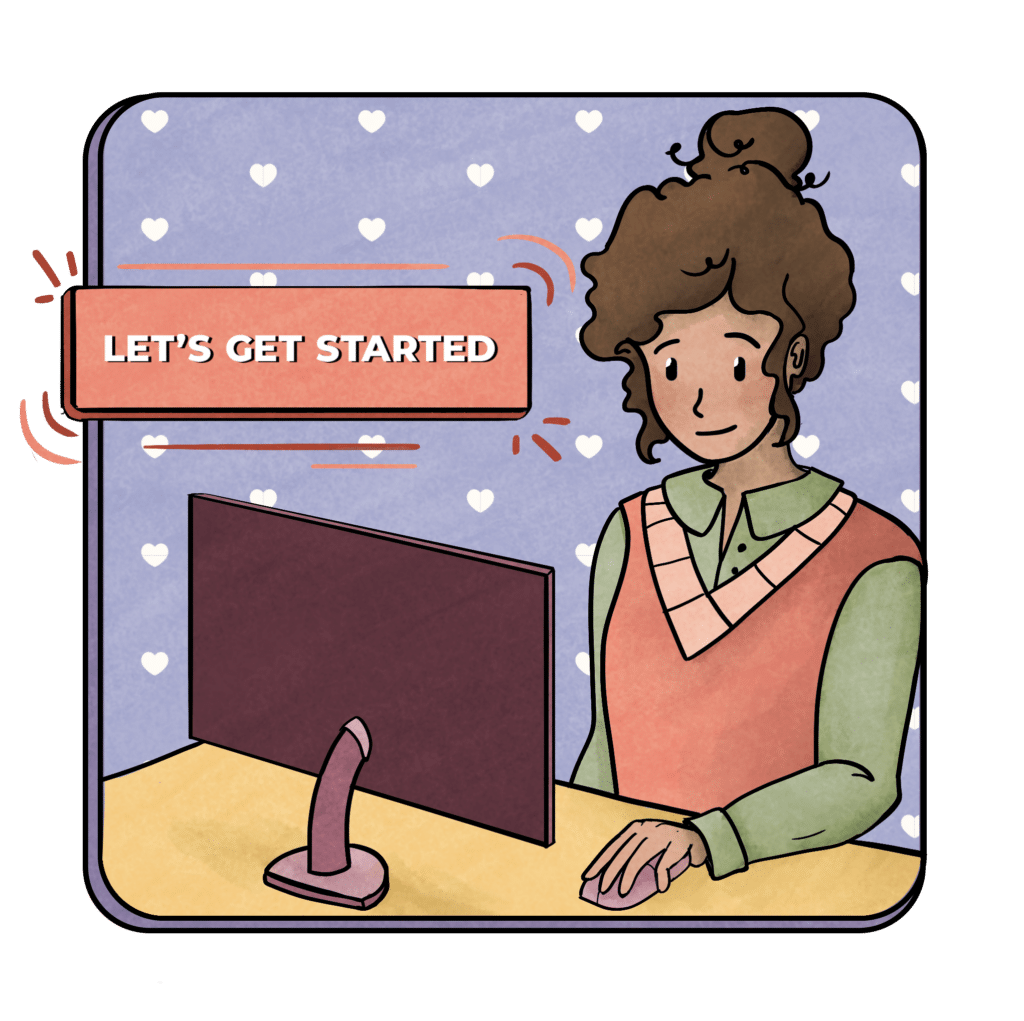As busy parents of four children, my wife Rebekah and I know first-hand that “it takes a village” is so true, especially in regard to the group gifting process.
Today’s village looks very different than we imagine it once did, especially before children and before COVID.
For us, that village is a collection of organizations, services, and individuals that round out the skills and experience we, as parents, can’t or don’t offer our children.
Some of these experiences are an enrichment, building, time window, or structure we could never do or provide ourselves within our home.
What am I talking about?
School, for starters, and all administrators, teachers, counselors, librarians, etc., is encapsulated by the school.
Beyond school, we send our kids to camp. In addition, they play in sports in the local rec leagues that rely on parent volunteer coaches. I coach, and our oldest daughter referees for these leagues.
Additionally, coaches, nurses, instructors, mentors, tutors, delivery people, and people operating the trash truck, to name a few more.
A village is inclusive of hundreds of different titles, roles, and descriptions.
In a post-COVID world, we have increased awareness and context of the individuals who comprise our village. Therefore, we seek to intentionally pay closer attention to so many more in the village that make our lives possible.
While it is easy to take for granted that many people are ‘just doing their job,’ these individuals have families to support and their own worries and fears, just like the rest of us.
At The Appreciation Company, we believe everyone within ‘the village’ benefits from knowing we are grateful for what they do and their impact on our lives.
When gratitude is expressed, and appreciation received, the relationship strengthens.
A Problem with Expressing Appreciation That Needed a Solution
It all started with two classrooms, then seven.
Rebekah and I are often asked about the genesis of The Appreciation Company.
Let’s roll back the clock to May 2019.
Our boy/girl twins, Dashiel (Dash for short) and Beau (Beau for short), were in two classrooms at a Montessori in Kirkland, Washington.
Being the “organizing parents” Rebekah and I are, we approached the school director, Jayme.
We offered to organize group gifts for the teachers and assistants in the two classrooms, Bluebell and Poppy. The seven classrooms at this school are all named after a flower.
Jayme embraced our offer and provided the email addresses of the parents of the children for the two classrooms.
The arduous process of coordinating a group gift
- Draft an email with details like our Venmo, Paypal, Square Cash, or offers for other arrangements like dropping off cash or a check at the front desk.
- Send the initial email to the parents.
- Send reminders
- Collect the cash from the various platforms.
- Send more reminders about the final deadline.
- Reconcile the money collected to a final total.
- Purchase gift cards
- Purchase paper cards
- Write notes to the teachers.
- Deliver the notes to the school.
Whew, that’s a lot.
Additionally, Montessori schools present a few complications beyond a typical group gift for a single individual like a coach or our elementary school teachers.
Our school has one teacher, plus two assistants for each classroom.
Therefore, when contacting parents, we had to prompt and get the details for splitting the contributed money between the teacher and two assistants.
In other words, we had to get a consensus on how much money to give the teacher v. the two assistants.
When parents responded with details of the split, they also suggested a personal note to write to the instructors.
While this was a great idea, I realized the implication.
Rebekah had to hand-write six cards with more than a dozen personal messages from the parents who offered their notes of appreciation and included their names.
By the way, Rebekah had to write the notes because no one wants to read Neil’s handwriting.
This raised another question.
What about the parents who contributed but didn’t offer their notes? Rebekah wrote their names, too.
Then, off we went to the drugstore for six gift cards with the exact amounts, plus six note cards.
The major impact our efforts had on the school
When I dropped the cards off with Jayme at the school that afternoon, she expressed her appreciation for how much it means to the teachers and staff to be recognized.
Then the first of two fateful messages were uttered that week that set Rebekah and me on the path to creating The Appreciation Company.
Jayme stated, almost casually, to herself: “It’s too bad that we didn’t have other parents organize for the other five classrooms.”
What we both realized at that moment was the inherent inequality or imbalance that occurs when one parent has the energy to take on that work or not.
So, I replied, “Send us the parents’ email addresses from the other five classrooms. We’ll get it done.”
Free Guide to Hassle-Free Group Gift Coordination
How group gifting for the entire school differed from individual classrooms
- Now, we had to appreciate additional staff members such as admins, supplemental staff for music, language, etc., cleaning support, aftercare, before care, and ‘roamers’ who work across the classrooms.
- When I went to purchase 20 gift cards for a few thousand dollars at the drugstore, my bank flagged my account and froze my debit card. It required a phone call or two to resolve.
- This work required a spreadsheet to track and reconcile gift amounts from 100+ parents across a whole school and five cash transfer methods (Venmo, PayPal, Square Cash, Cash, and Check).
- Finally, there was basically zero accountability around the money. If Rebekah and I wanted to pocket some cash, no one would be the wiser. The whole process was 100% dependent on trust.
Again, Jayme was grateful for the work.
Upon returning home, Rebekah uttered the second statement that week that set the path to launching The Appreciation Company in motion.
Rebekah and I were resting from the hubbub of what we had just completed. We were enjoying the spring weather on our front steps and feeling good about a job well done.
We had raised just over $6000 across the seven classrooms in a matter of days.
Finally, Rebekah said, “There ought to be an app for that.”
Building an easy way to express appreciation
For two years, Rebekah and I spoke to busy parents of school-aged children and school organizers like PTA presidents and Montessori directors about their group gifting process.
Also, 2020 happened, and all of us experienced a worldwide pandemic.
Insights from research about easy ways to express appreciation
- We are busy parents. Our lives are in constant motion. We strive for happy, engaged homes of harmony within.
- We all need more time to do all the things we want to do.
- Our connections in the community have become ‘thin.’ While COVID strengthened some connections, more have frayed.
- None of us need another app on our phones. But a service that made our lives easier by saving us time and keeping us organized is welcome.
- Change is hard. The “easy” button is often our default mode.
Three distinct roles are involved in a group gift for expressing appreciation
- Organizers. This is a parent or someone at an organization like a school or sports league. It is either this person’s job to navigate the group gifting process or this person feels compelled to organize a group gift.
- Contributors. Most often, parents of the children who are involved in the collective activity or experience. For example, the parents of all the kids on a sports team or in a class together at school.
- Recipients: A person who has poured much of his or her time, skill, and passion into other people’s children. Typically recipients are underpaid, or not paid at all, in the case of volunteer coaches for sports.
Two ways of organizing group gifts
- Single grouping: A single grouping is for a classroom or a sports team. Recipients are individual teachers or coaches, or a few people, including class assistants, assistant coaches, and tutors centered around a single grouping, like a soccer team, a classroom, or an event.
- Groups of groups: Each classroom in a school is a single group. All the classrooms of a school constitute a group of groups. In sports leagues, every team is its own group, while all the teams are groups of groups. Now, when considering a whole school or sports league, we need to take into account the additional support staff who aren’t directly related to the single group. At a school, the additional staff includes admins, cleaning staff, before care, and aftercare. In a sports league, consider referees, operational staff, grounds/maintenance, equipment managers, etc.
We created The Appreciation Company to make group gifting easy.
We support two primary audiences with our group gifting platform
- The individual, organizing parent, or PTA member. The person organizing a group gift for a single experience or event, such as coach and assistant coach at the end of the soccer season. The same organizing process occurs for a classroom teacher at the end of the school year. These group gifts can be more than schools or sports teams. They can include retirements, birthdays, baby showers–you name it.
- Program director, PTA, or administrator of a school or sports league. Organizations should be able to easily organize group gifts from each classroom’s parents for teachers, staff, and individuals at a school. Additionally, it should be easy for sports leagues to organize group gifts from the parents of the players across every team, the coaches, assistant coaches, officials, and support staff at the end of the season.
How We Named The Appreciation Company
We talked to as many people as possible and gathered feedback about what we were working on about the group gifting process.
We were continually told of additional situations or scenarios in that a group gift capability could be used and where it would be helpful.
A name that focused on only one group of recipients wasn’t going to work because it would exclude someone else. The company couldn’t be teacher-specific or coach-specific. It couldn’t be specific to any specific recipient because it would exclude another group.
In addition, we wanted to focus on the outcome achieved or the action that was performed.
Most important in the name, however, were the values that we wanted to convey through the company.
We see a company as serving many stakeholders. It is worth the time to dive into each of these stakeholders.
The most important part of our company is the customer. The customer comprises three primary stakeholders in any group gift:
- Organizers
- Recipients
- Contributors
Benefits of organizers in the group gifting process
- Organized. Individuals we all want to be (or appear to be 🙂).
- Proactive. It takes time to get a gift to someone and deliver it on time.
- Activate others. Organizers think beyond themselves and activate others to take action. In turn, this helps those individuals do the good they want to do.
- Community builders. The participants in a group gift are a new, small, network of individuals that are grateful, generous, and aligned to a common cause for a period of time.
To summarize, organizers are heroes. We see them that way, and The Appreciation Company will do just about anything to make the job of an organizer easier. We are all in!
Role of recipients in the group gifting process
Recipients of the group gifts themselves, these individuals are also heroes.
They are teachers, coaches, and nurses–those individuals that serve our community to whom we feel gratitude.
Some recipients are paid for what they do; many are volunteers.
Some are seen by the community, but many are unseen:
- Cleaning and sanitization staff
- Schedulers
- Individuals stocking shelves, freezers and refrigerators
- Food preppers
- Loaders and unloaders of boxes and trucks
- And so many more.
When Rebekah organized the group gifts for the whole school that first time, she was able to not only recognize the teachers and assistants for the seven classrooms. She could now also recognize the sanitization staff, the admins, the aftercare staff, and anyone else who was fractionally dedicated to the children of the contributing parents.
Organizing gifts for the entire school opened our eyes, and the eyes of contributing parents, to the fact that it truly does take a village to raise children.
Today, when organizing group gifts, we ask, “Who are we leaving out that should be seen and recognized?”
We intentionally recognize both those who are seen and unseen.
The Appreciation Company seeks the names, the roles, and who, and how everyone serves and makes the service and experience possible.
Role of Contributors in the group gifting process
Contributors are the individuals who contribute to the gifts. Most often, these are the parents of the children.
Additionally, they can be grandparents, guardians, aunts, uncles, or others in the community who are activated to contribute to a group gift.
We strive to highlight and explain to contributors the impact that recipients have on their lives and their children.
The Appreciation Company seeks to create an experience where contributing to a gift isn’t just a transaction or paying hard-earned money.
Recipients are individuals that have made an impact in some manner and capacity in the lives of those the contributor cares deeply about.
Recipients have families, goals, ambitions, dreams, hardships, challenges, loss, and trauma. We seek to bring that to light and share a little of that story.
The Science of Expressing Appreciation
We have spent much time thinking about and researching the root cause behind what compels us and others to say “Thank You.”
The answer returned to a clear emotion root cause: the feeling of gratitude.
With our company, we sought to make it easy to act on that gratitude. That action is best described as showing appreciation.
When researching gratitude and its relationship to appreciation, we learned that the more someone is grateful, the happier they are.
The research also indicates that people have a superpower they can activate to boost their happiness: expressing gratitude in the form of appreciation.
Yup, acting on that gratitude or being engaged in gratitude.
The field of Positive Psychology has uncovered that engagement and the act of altruism boosts happiness for long periods of time.
Researchers have also uncovered that the boosts in happiness affect both the person expressing appreciation and the recipient.
Our desire to act is innate to our human nature
We feel gratitude to another person after a milestone, at the end of a season, or in moments of significant impact in our lives. Underlying the emotion is the need for deep human connection biologically hardwired into us as a reward system. A system of reciprocity.
This is why expressing gratitude makes us happy.
Research on happiness, gratitude, and expressing appreciation confirms that acting upon feelings of gratitude benefits both the recipient and the giver.
In one study, the action of adequately thanking a person, even if done late, creates a surge in happiness for both individuals, with benefits lasting a month.
Therefore, putting gratitude in action is the heart of The Appreciation Company, and Gratitude in Action is our tagline.
The Appreciation Company is all about making it easier for an individual or a group of people to take action on the gratitude they feel in the form of appreciation.
We believe we have a role to play in making the world a better place.
The Appreciation Company is Changing the Group Gifting Process
We believe…
Technology, good design, and a little entertainment can help us activate the latent good we want to do during the group gifting process.
In strengthening the bonds of community and seeing the unseen.
People want to take action on the positive gratitude emotions they feel.
When individuals are empowered, they organize and activate their community.
In the midst of the storm called life, individuals seek to create normalcy by seeking out others who share their values.
The Appreciation Company acts as a massively positive social network that engenders happiness. One that is free of the negative influence of advertising.





